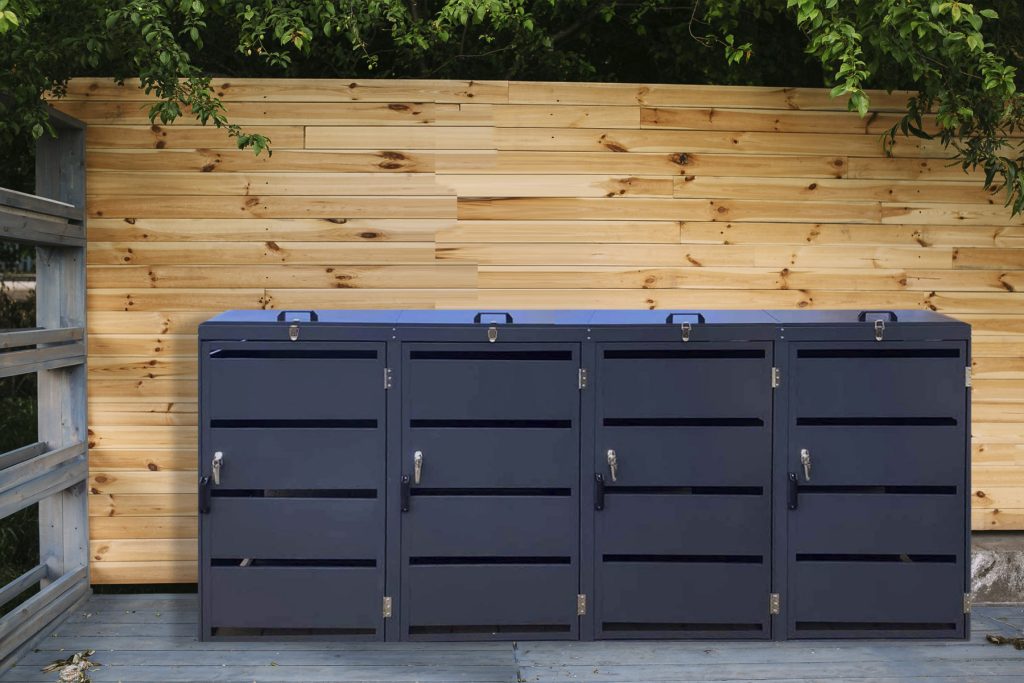Call Us Today:
Call Us Today:

Not every home has the luxury of a large garden, and that’s okay. Small outdoor spaces can be both functional and aesthetically pleasing when designed thoughtfully. Whether you have a compact front garden, a narrow patio, or a tiny patch of green behind your home, there are plenty of ways to make the most of it.
The solutions are simple: clever storage, smart layout, and an authentic and thoughtful design.
Here’s how to transform even the smallest outdoor space into a tidy, relaxing retreat that feels bigger, brighter, and more organised.
Step 1: Think Vertically
When space is tight, walls and fences become your best friends. Instead of cluttering the ground with planters, furniture, and tools, look upwards.
Vertical storage and planting can completely change the feel of a compact garden. Consider:
These vertical features draw the eye upward, making the garden appear larger while keeping the ground clear and accessible. These products are available in local hardware shops, but if you’re crafty you could easily design some of these solutions yourself!
Step 2: Keep It Clutter Free
In a small residential garden, clutter is your biggest enemy when trying to create a aesthetic and functional space. Even a few loose and scattered items such as a hose on the ground, a wheelie bin out of place, a bike resting against the wall, can make your front or back garden feel messy and unorganised.
The solution to this, is designated, high quality, storage units.
A compact garden storage unit is the perfect solution for keeping everything organised. It can hold tools, toys and garden accessories while fitting in seamlessly to the overall look of your garden. Likewise, a wheelie bin storage units, hides away bins, making the garden look instantly cleaner and more cohesive (lets face it, wheelie bins aren’t the prettiest pieces of equipment in your garden, maybe consider finding a home for them). And if you are a cyclist, a dedicated unit for your bike allows for easy access at the front or back of your garden, no more dragging bikes through the house or leaving bikes to rust out the back.
Essentially, everything needs a home to reduce clutter and to give you peace of mind.
Step 3: Choose Multi-Functional Furniture
When floor space is limited, every item should earn its place. Multi-functional furniture helps you do more with less.
Look for:
These pieces allow you to enjoy your garden comfortably while keeping it organised.
Bonus: Choose furniture made from weather-resistant materials like treated wood or coated metal for long-term durability and less maintenance.
Step 4: Light, Colour and Design Details
Light and colour can make a dramatic difference in how spacious your garden feels.
When choosing storage or furniture, go for neutral tones like light grey, sage, or natural wood. These colours blend seamlessly with most garden styles and create a calm, cohesive look.
Bonus Tip: Secure and Weatherproof Your Space
Compact gardens are often more exposed to the elements, meaning storage and layout need to work harder. Wind, rain, and even opportunistic theft can cause frustration if things aren’t properly secured.
A lockable garden or bike storage unit keeps belongings safe and dry while helping maintain your garden’s tidy appearance. It’s a small investment that makes a big difference in peace of mind.
Final Thoughts
Getting the most out of your small garden isn’t about cramming more in, it’s about curating what matters. By thinking vertically, keeping clutter out of sight, and designing with intention, even the smallest garden can feel open, secure, and serene.